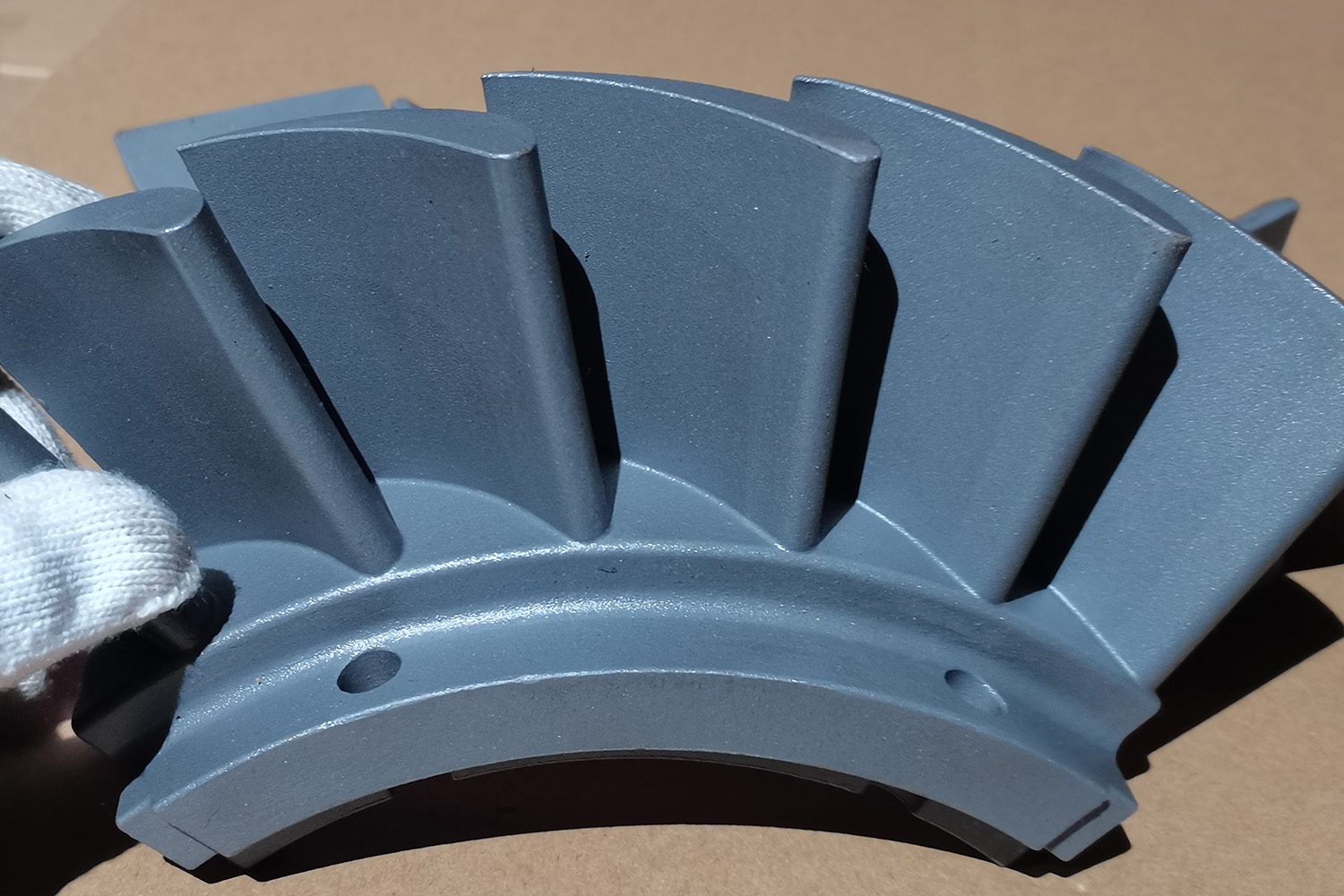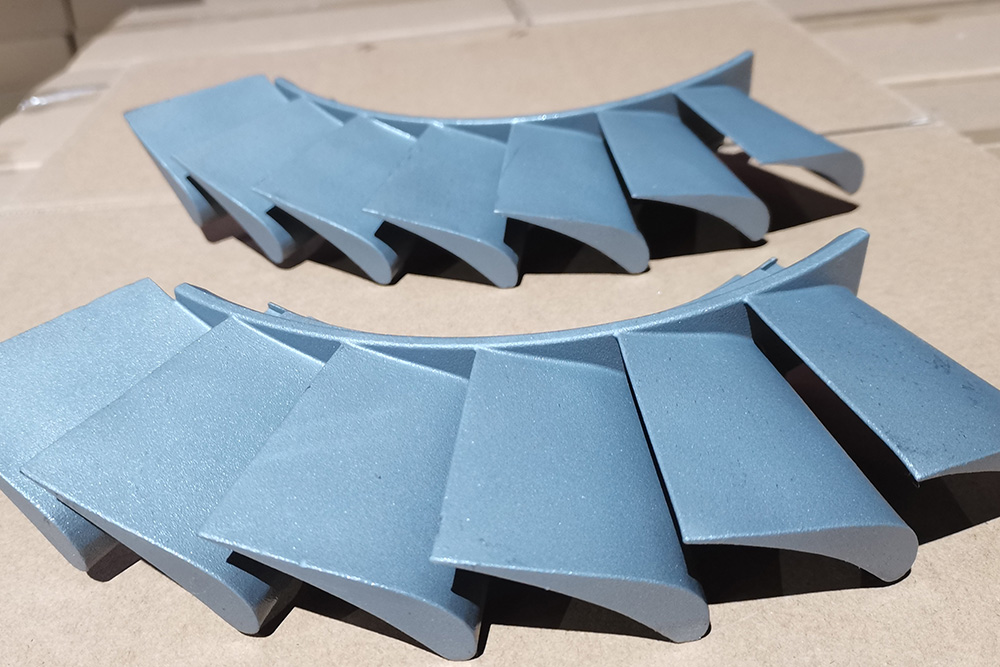Ferritic stainless steel refers to stainless steel with body-centered cubic ferrite as the matrix structure at high temperature and normal temperature. Ferritic stainless steel has iron and chromium as the main elements, generally does not contain nickel, and some contain a small amount of molybdenum, titanium or niobium and other elements. It has good oxidation resistance, corrosion resistance and chloride corrosion cracking resistance. In addition, ferritic stainless steel also has the characteristics of large thermal conductivity, small expansion coefficient, good oxidation resistance, and excellent stress corrosion resistance. It is mostly used to manufacture parts that are resistant to atmospheric, water vapor, water, and oxidative acid corrosion. Representative grades of ferritic stainless steel are: AISI 410 (UNS S41000), AISI 420 (UNS S42000), AISI 430 (UNS S43000) according to ASTM; 1.4006, 1.4021, 1.4016, according to EN standard...etc.
Ferritic stainless steel can be divided into low chromium, medium chromium and high chromium according to the chromium content. According to the purity of the steel, especially the content of carbon and nitrogen impurities, it can be divided into ordinary ferritic stainless steel and ultra-pure ferritic stainless steel. Ordinary ferritic stainless steel has the disadvantages of low temperature and room temperature brittleness, notch sensitivity, high intergranular corrosion tendency, and poor weldability. Although this type of steel was developed earlier, its industrial application has been greatly restricted. These deficiencies of ordinary ferritic stainless steel are related to the purity of the steel, especially the high content of interstitial elements such as carbon and nitrogen in the steel. As long as the carbon and nitrogen in the steel are low enough, the above shortcomings can basically be overcome.
Compared with austenitic stainless steel, ferritic stainless steel has better corrosion resistance, heat resistance and processability. Since the ferrite phase can hardly dissolve carbon, ferrite has the characteristics of being soft and easy to deform. Like martensitic stainless steel, since the lattice structure is a body-centered cubic structure, it is paramagnetic, so ferritic stainless steel is magnetic. Austenitic stainless steel is non-magnetic because of its face-centered cubic structure.
The price of ferritic stainless steel is not only relatively low and stable, but also has many unique features and advantages. It has been proved that ferritic stainless steel is a very Excellent alternative material.
Ordinary ferritic stainless steel
Such steels include low, medium and high chromium contents. Low-chromium ferritic stainless steel contains about 11% to 14% chromium, such as 00Cr12 and 0Cr13Al in China. American AISI 400, 405, 406MF-2. This type of steel has good toughness, plasticity, cold deformation and weldability. Because steel contains a certain amount of chromium and aluminum, it has good oxidation resistance and rust resistance. 405 can be used as petroleum refining tower, tank lining, steam turbine blade, high temperature sulfur corrosion resistant device, etc. 400 for household and office appliances, etc. 409 is used for automobile exhaust muffler system devices and cold and warm water pipes, etc. Medium chromium ferritic stainless steel, the chromium content is 14% to 19%, such as 1Cr17 and 1Cr17Mo in China. AISI 429, AISI 430, AISI 433, AISI 434, AISI 435, AISI 436, AISI 439 in the United States. This type of steel has better rust and corrosion resistance. Its work hardening coefficient is small (n≈2), and it has good deep drawing performance, but its ductility is poor. AISI 430 ferritic stainless steel is used for architectural decoration, automobile decoration, kitchen equipment, gas burners and parts of nitric acid industrial equipment, etc. AISI 434 is used for exterior decoration of automobiles and buildings. 439 is used as a hose for gas water heaters, coal and gas pipelines, etc. High chromium ferritic stainless steel contains 19% to 30% chromium, such as Cr18Si2 and Cr25 in China, AISI 442, AISI 443 and AISI 446 in the United States. Such steels have good oxidation resistance. AISI 442 is used continuously in the atmosphere, the upper limit temperature is 1035°C, and the maximum temperature for continuous use is 980°C. AISI 446 ferritic stainless steel has better oxidation resistance.
High-purity ferritic stainless steel
This type of steel contains extremely low carbon, nitrogen; high chromium, molybdenum, titanium, niobium and other elements. Such as China's 00Cr17Mo, 00Cr18Mo2, 00Cr26Mol, 00Cr30Mo2. This type of steel has good mechanical properties (especially toughness), weldability, intergranular corrosion resistance, pitting corrosion resistance, crevice corrosion resistance, and excellent stress corrosion cracking resistance. For example, 18-2 ferritic stainless steel has good corrosion resistance in nitric acid, acetic acid, NaOH, pitting corrosion resistance in 3% NaCl and FeCl3 is equivalent to or exceeds 18-8 austenitic stainless steel, 26CrMo steel in many media Corrosion resistance, especially in organic acids, oxidizing acids, and strong alkalis. It has good pitting corrosion resistance in strong chloride medium. No stress corrosion cracking occurs in chloride, hydrogen sulfide, excessive sulfuric acid and strong alkali. 30Cr-2Mo has higher resistance to pitting corrosion and crevice corrosion while maintaining stress corrosion resistance.


Corrosion resistance of ferritic stainless steel
(1) Uniform corrosion.
Chromium is the easiest element to passivate. In the atmospheric environment, the iron-chromium alloy with a chromium content of more than 12% can be self-passivated. In the oxidizing medium, the chromium content can be passivated if it is more than 17%. In some corrosive medium, high chromium and molybdenum, nickel, copper and other elements can be added to obtain good corrosion resistance.
(2) Intergranular corrosion.
Ferritic stainless steels, like austenitic stainless steels, suffer from intergranular corrosion, but the sensitization treatment and heat treatment to avoid this corrosion are just the opposite. Ferritic stainless steel is prone to intergranular corrosion from rapid cooling above 925°C, and the state (sensitized state) that is susceptible to intergranular corrosion can be eliminated after a short period of tempering at 650-815°C. The intergranular corrosion of ferritic steel is also the result of chromium depletion caused by carbide precipitation. Therefore, reducing the content of carbon and nitrogen in steel and adding elements such as titanium and niobium can reduce the susceptibility to intergranular corrosion.
(3) Pitting and crevice corrosion.
Chromium and molybdenum are the most effective elements to improve the pitting and crevice corrosion resistance of stainless steel. As the chromium content increases, the chromium content in the oxide film also increases, and the chemical stability of the film increases. Molybdenum is adsorbed on the active metal surface in the form of MoO4, which inhibits the dissolution of the metal, promotes repassivation, and prevents the damage of the film. Therefore, high chromium and molybdenum ferritic stainless steel has excellent resistance to pitting and crevice corrosion.
(4) Resistance to stress corrosion cracking.
Due to the characteristics of the organizational structure, ferritic stainless steel is corrosion-resistant in the medium where austenitic stainless steel produces stress corrosion cracking.
Mechanical properties of ferritic stainless steel
Ferritic stainless steel cannot be strengthened by heat treatment because there is no phase change. Generally, it is used after annealing at 700-800°C. Due to the similar atomic size of iron and chromium, the solid solution strengthening effect is small, the yield strength and tensile strength of ferritic stainless steel are slightly higher than that of low carbon steel, and the ductility is lower than that of low carbon steel.
1) Room temperature brittleness of ordinary ferritic stainless steel.
Ordinary ferritic stainless steel is sensitive to notches, and the brittle transition temperature is above room temperature except for low-chromium ferritic stainless steel. The higher the chromium content, the greater the cold brittleness. This cold brittleness is related to the interstitial elements such as carbon and nitrogen in the steel, and the ultra-pure ferritic steel has very low carbon content in interstitial elements such as carbon and nitrogen, so it can obtain good toughness, and the brittle transition temperature can be lowered below room temperature.
2) High temperature embrittlement of ordinary ferritic stainless steel.
Ordinary ferritic stainless steel is heated to above 927°C and then rapidly cooled to room temperature, the plasticity and toughness are significantly reduced. This high-temperature embrittlement is related to the rapid precipitation of carbon (nitride) compounds on grain boundaries or dislocations at a temperature of 427-927 °C. Reducing the carbon and nitrogen content of the steel (using ultra-pure technology) can greatly improve this brittleness. In addition, when the ferritic steel is heated above 927°C, the grain capacity will be coarsened, and the coarse grain will deteriorate the plasticity and toughness of the steel.
3) Formation of σ-phase.
According to the iron-chromium phase diagram, when kept at 500-800°C, the alloy containing 40%-50% chromium will form a single phase σ, and the alloy containing less than 20% or more than 70% chromium will form an α+σ dual-phase structure. The formation of σ-phase will significantly reduce the ductility and toughness of steel. Therefore, ferritic stainless steel should not be used for a long time at 500-800 °C.
4) Brittleness at 475°C.
High chromium (>15%) ferritic steel will be strongly embrittled when kept at 400-500 °C. This kind of embrittlement takes a shorter time than the precipitation of σ phase. For example, when 0.080C-0.4Si-16.9Cr ferritic stainless steel is kept at 450°C for 4 hours, the room temperature impact toughness almost drops to zero. The degree of embrittlement increases with the increase of chromium content, but the toughness can be recovered after treatment above 600 °C. Embrittlement at 475°C is the result of precipitation of the chromium-rich alpha phase. Such steel should avoid heating near 475°C.
Post time: May-02-2023

